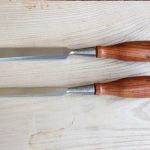We may receive a commission when you use our affiliate links. However, this does not impact our recommendations.
 Shortly after arriving in the USA Vlad began working at Thomas Newman’s studio (read part one of this story here). At first, he helped in building the designs that Tom created or that were commissioned by interior designers, but gradually he branched out and started developing his own unique style and language.
Shortly after arriving in the USA Vlad began working at Thomas Newman’s studio (read part one of this story here). At first, he helped in building the designs that Tom created or that were commissioned by interior designers, but gradually he branched out and started developing his own unique style and language.
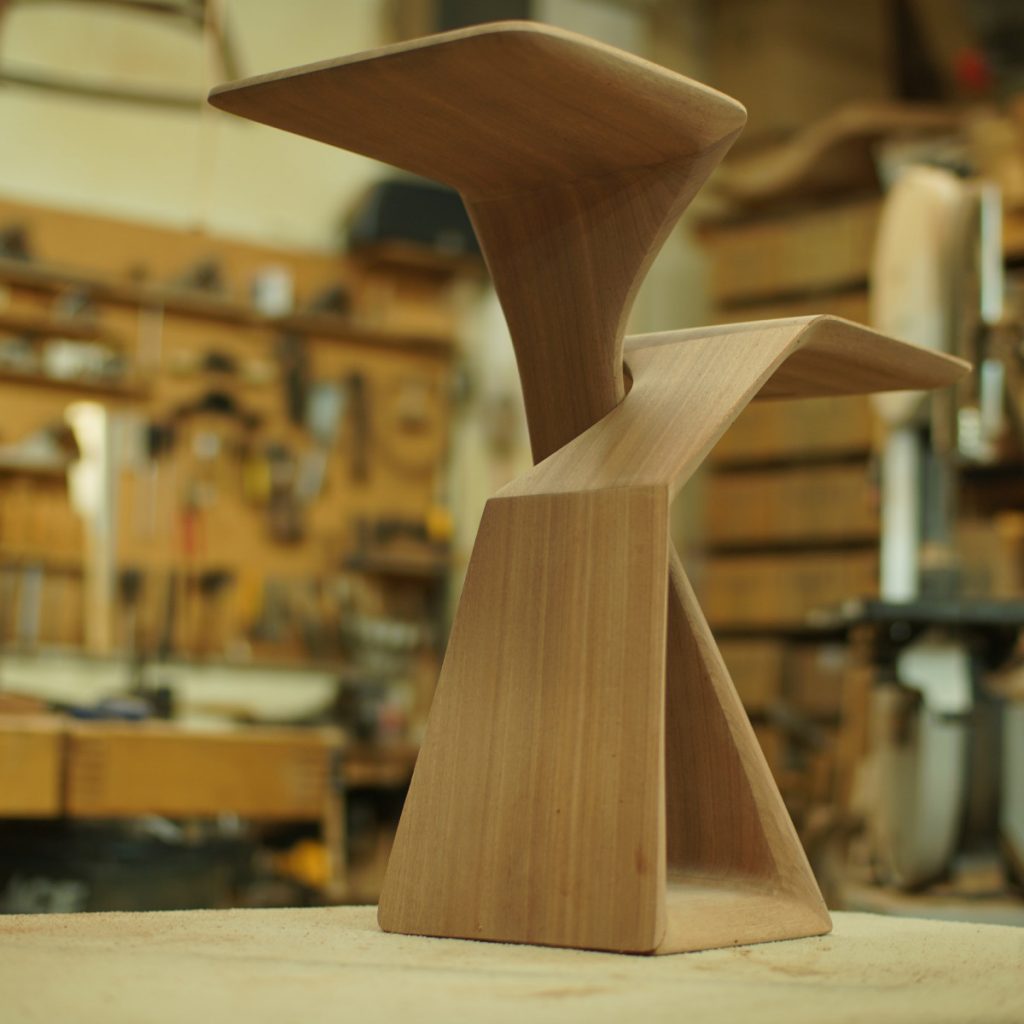
“The Loop”, an elegant side piece that Vlad designed, is a modern drink stand and occasional table. This piece’s parts are first milled with a CNC router, then glued together and finally hand shaped and finished.
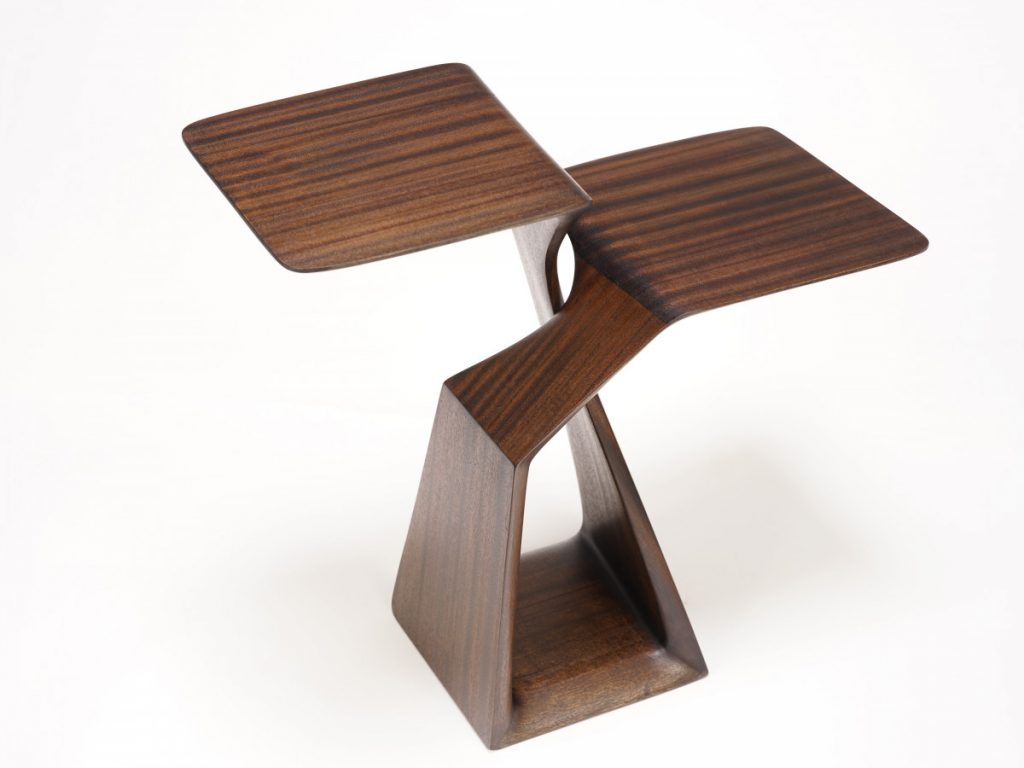

Above: Created by Vlad’s son, Nikita, this 3D computer virtual reality rendering of “The Loop”, is used by designers and clients alike as a means for introducing the piece to its future home, and to try out the different optional locations and relationships with existing furniture in the client’s residence.
Vlad’s training in printing and radar technology came to be very instrumental in helping him as he plunged into the Computer-Aided-Design (CAD) and imaging programs. The combination of a background in making things, solving problems, and overcoming both technical and real-life challenges provided him with a robust and unique tool kit.
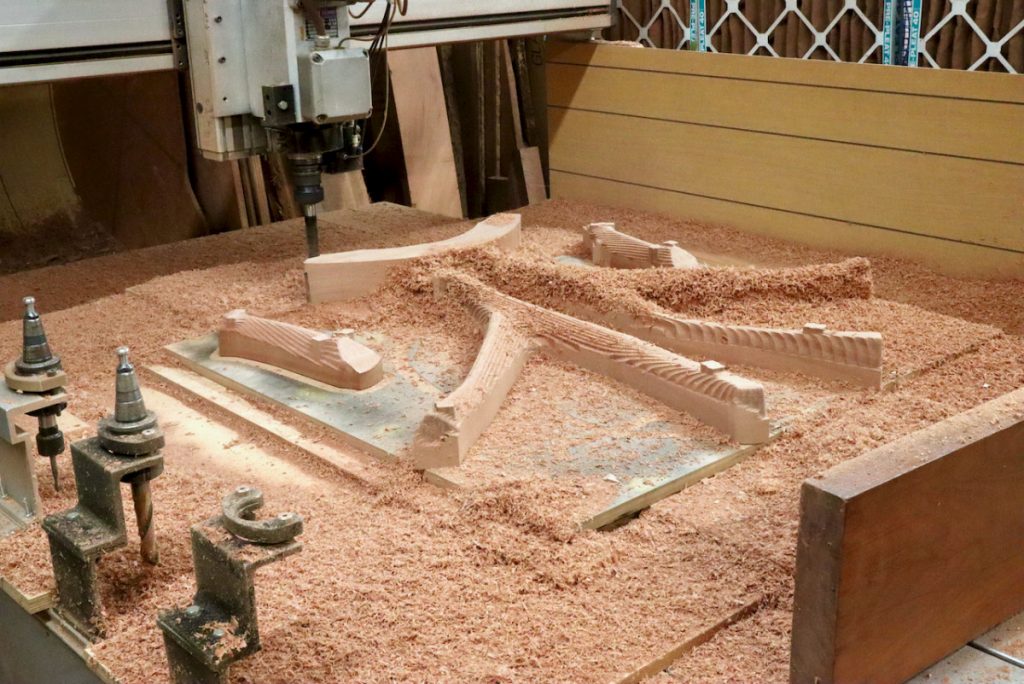
A CNC router while milling a block of Sapele wood that will be shaped with hand tools later on.
Today he oversees the production of some of the most cutting-edge designs in woodworking. Vlad has gained an unprecedented mastery in harnessing the liberating power of the computer to carve new paths for three-dimensional designs in wood. His often work reminds of the organic shapes seen in plants and animals. And his elegant designs convey a sense of flow from one component to the other, with elements that twist and turn, ascend and descend in total harmony.
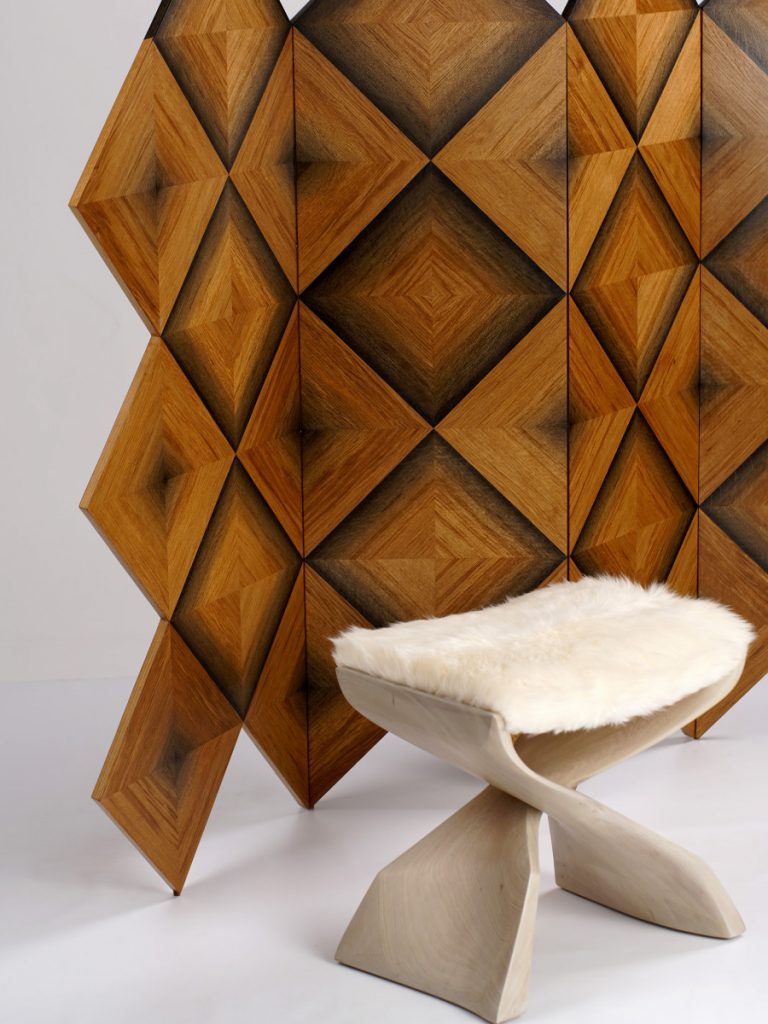
Evolution Stool. Behind it is Vlad’s bog oak screen.
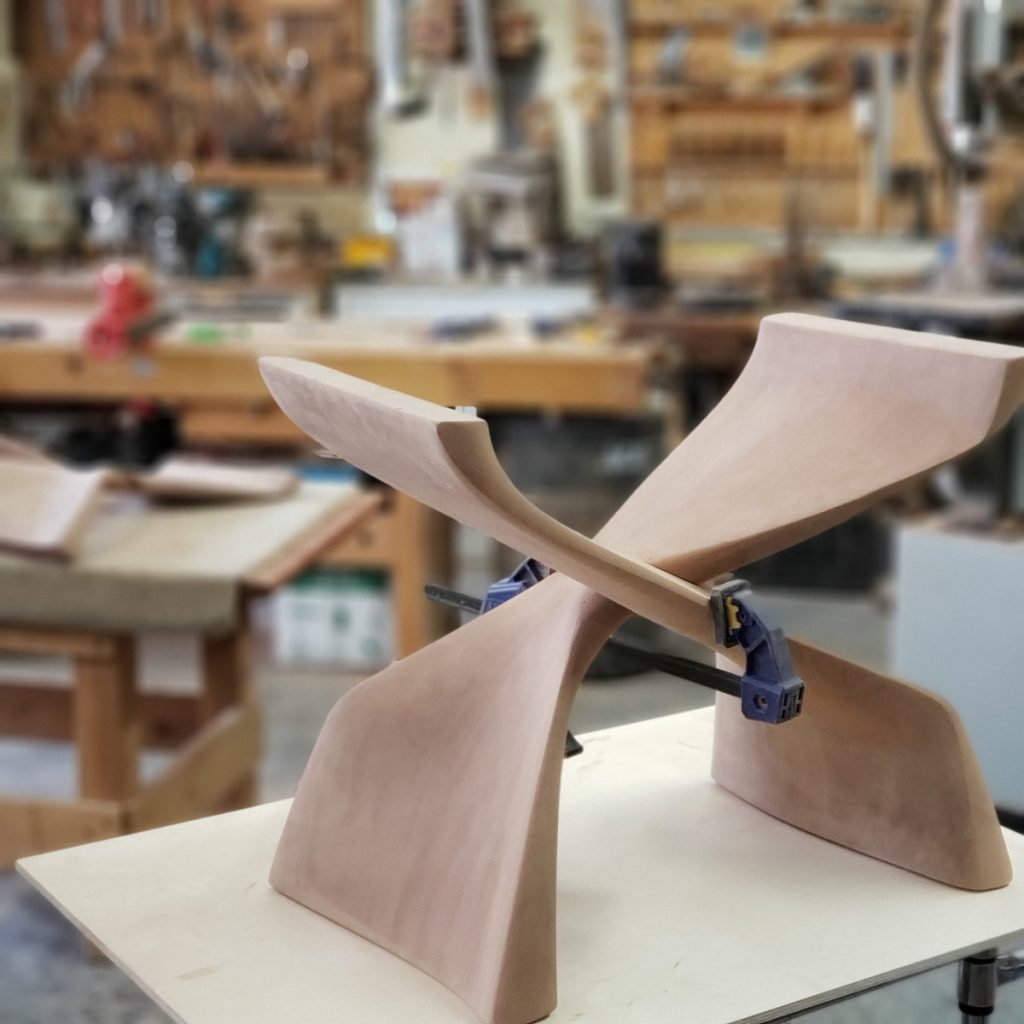
The two parts are glued together.
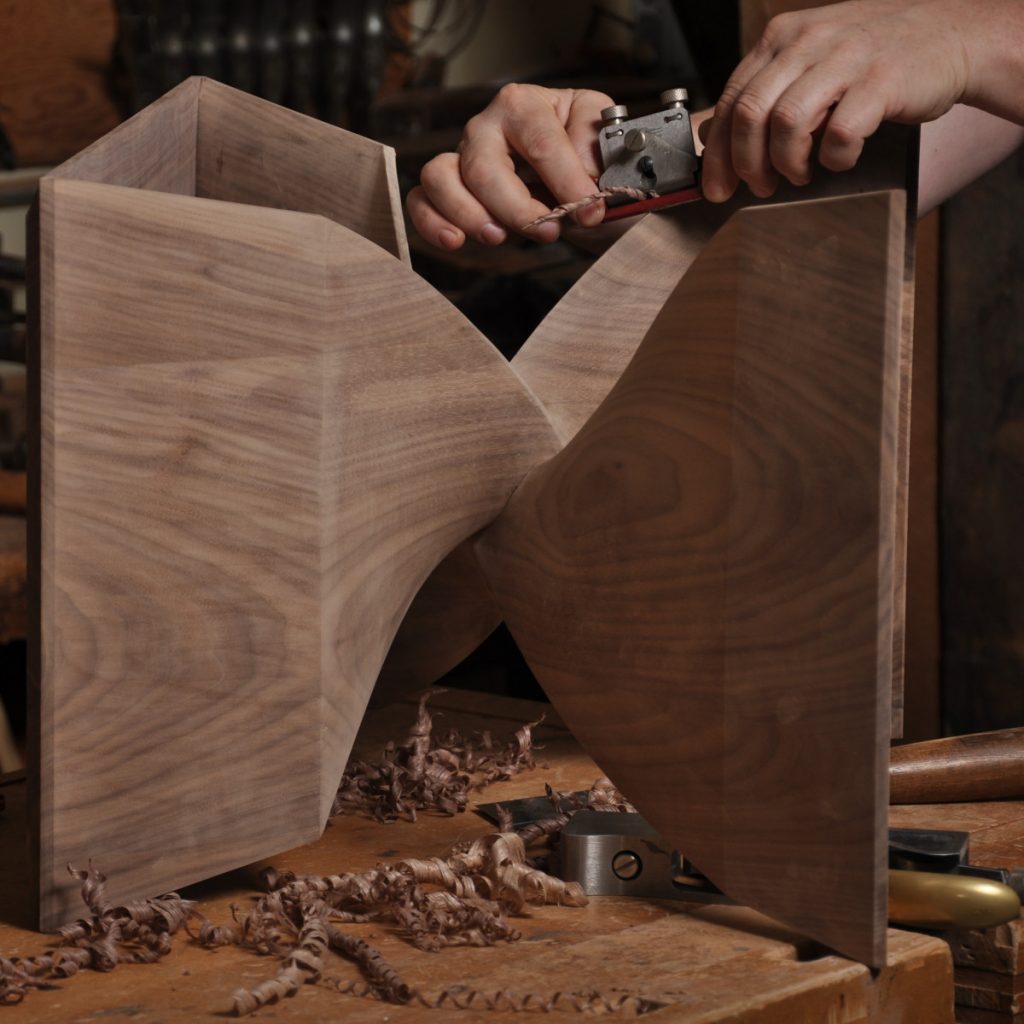
Vlad always relies on hand tools to shape his projects to perfection.
After brainstorming and sketching a new idea with a pencil, Vlad turns to the computer to build it in a 3D design program called Modo. Modo is a tool that allows him to conveniently evolve and distill the original idea to the point that it is mature enough to be built as a scale foam model on a 3D printer. Vlad tells me that his in-house collaborator on many of his projects is his son, Nikita, a prolific young graduate of NJIT (New Jersey Institute of Technology) who is a computer, imaging, and CAD wiz. He adds that Modo is a malleable medium that gives the designer a lot of freedom but it is just the first step in a long process though. While Modo is strong in providing the conceptual framework for the design Vlad has to migrate the object’s properties to a more engineering-based program named Solidworks in order to develop the work plans. Solidworks allows him to work on the parts that will constitute the whole. It gives him tools to create the joints, form sections, special mounts for future clamping, and to generate a set of targeted drawings that compose the entire piece. However, this is not the end of the computational process, as to transfer the data to the CNC router Vlad needs to rely on yet another program – Mastercam. Once this is done the actual work can begin.
Step by step: The making of a state of the art project.
Before deploying the CNC router, Vlad and Tom need to cut the parts’ blanks on a band saw.

After the Mahogany blanks are roughly cut to shape on the bandsaw they are anchored down to a plywood platform. Then the platform is mounted onto the bed of a CNC router to allow for the magic to take place. The CNC router is plowing the parts, and via a series of terraces that are gradually milled the parts begin to reveal themselves.
Then once the CNC reduction process is done comes the time for joint making (via a Festool Domino) and refinement. At this stage, the steps that the CNC router left behind need to be smoothed out by hand tools. To achieve this Vlad and Tom are using spokeshaves, rasps gouges, and many other useful hand tools in their arsenal. Although it takes a lot of time and muscles work this is the step where the two master craftsmen are giving the furniture its unique handmade touch and delivering it from the binary domain into the analog and personal world of a handcrafted creation.
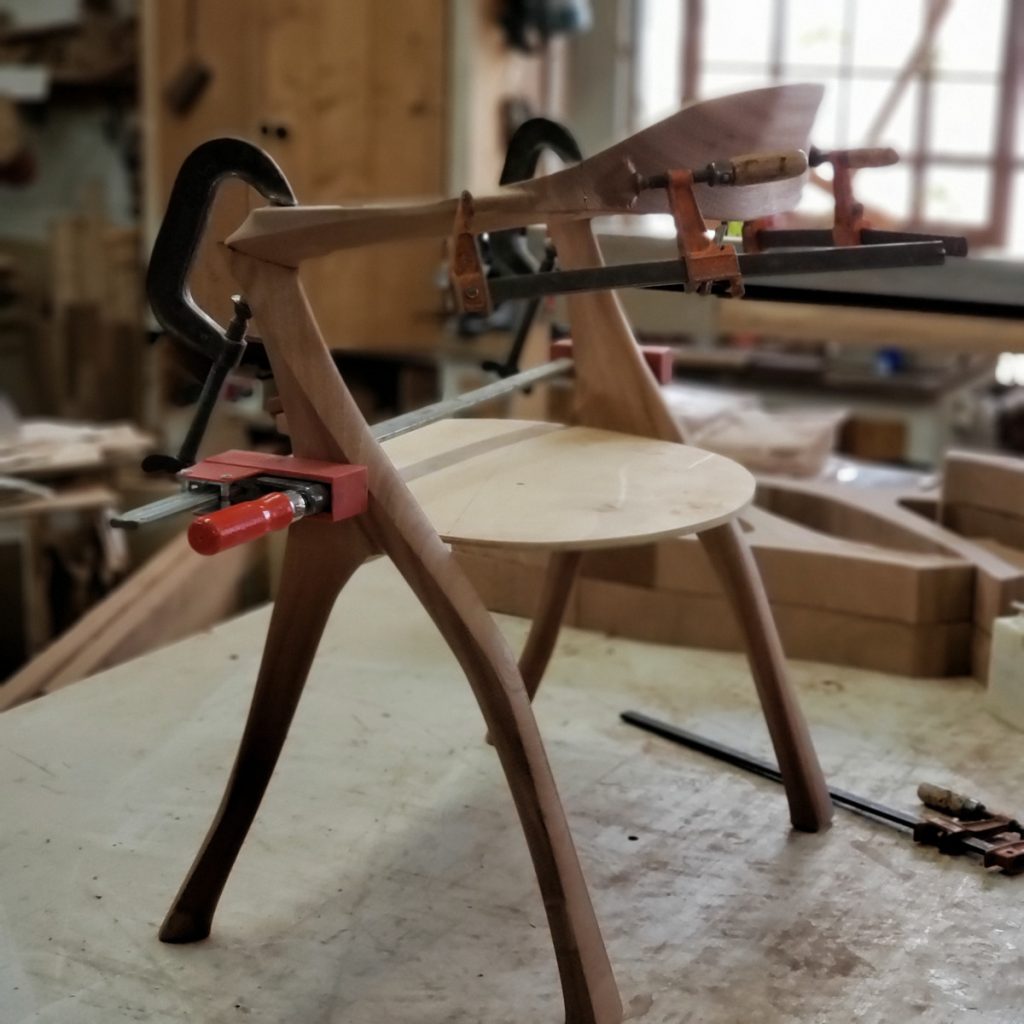
After the parts had been milled by the CNC router they were hand-shaped and then glued together before final shaping and finishing.
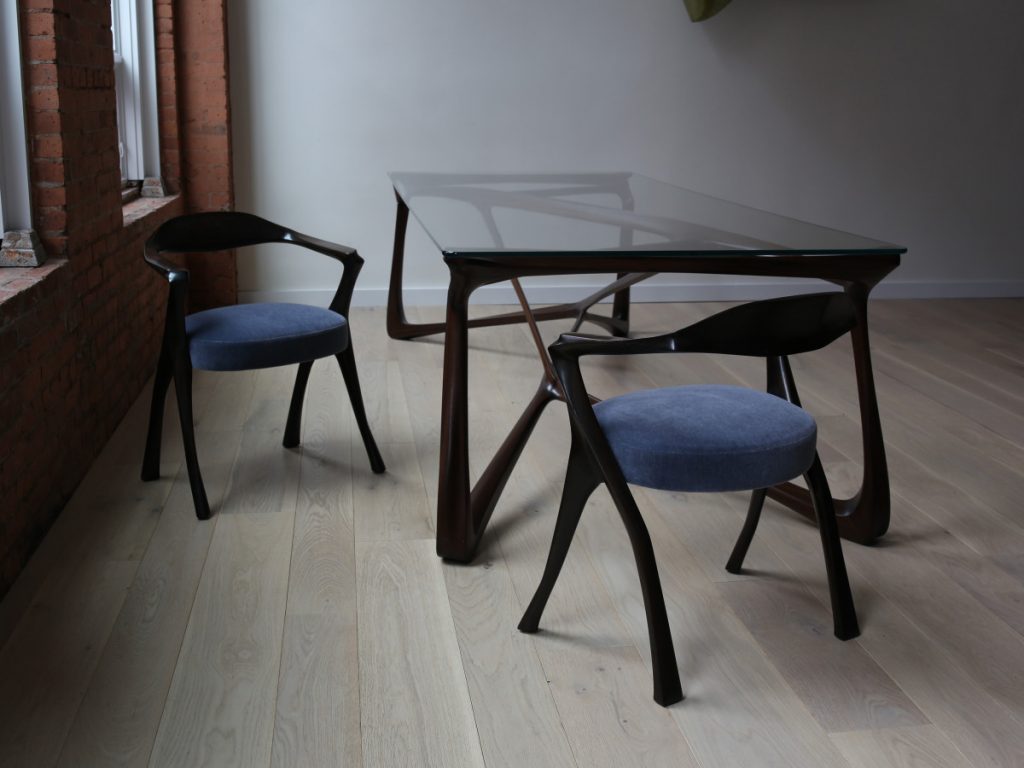
The Howard chairs and table.
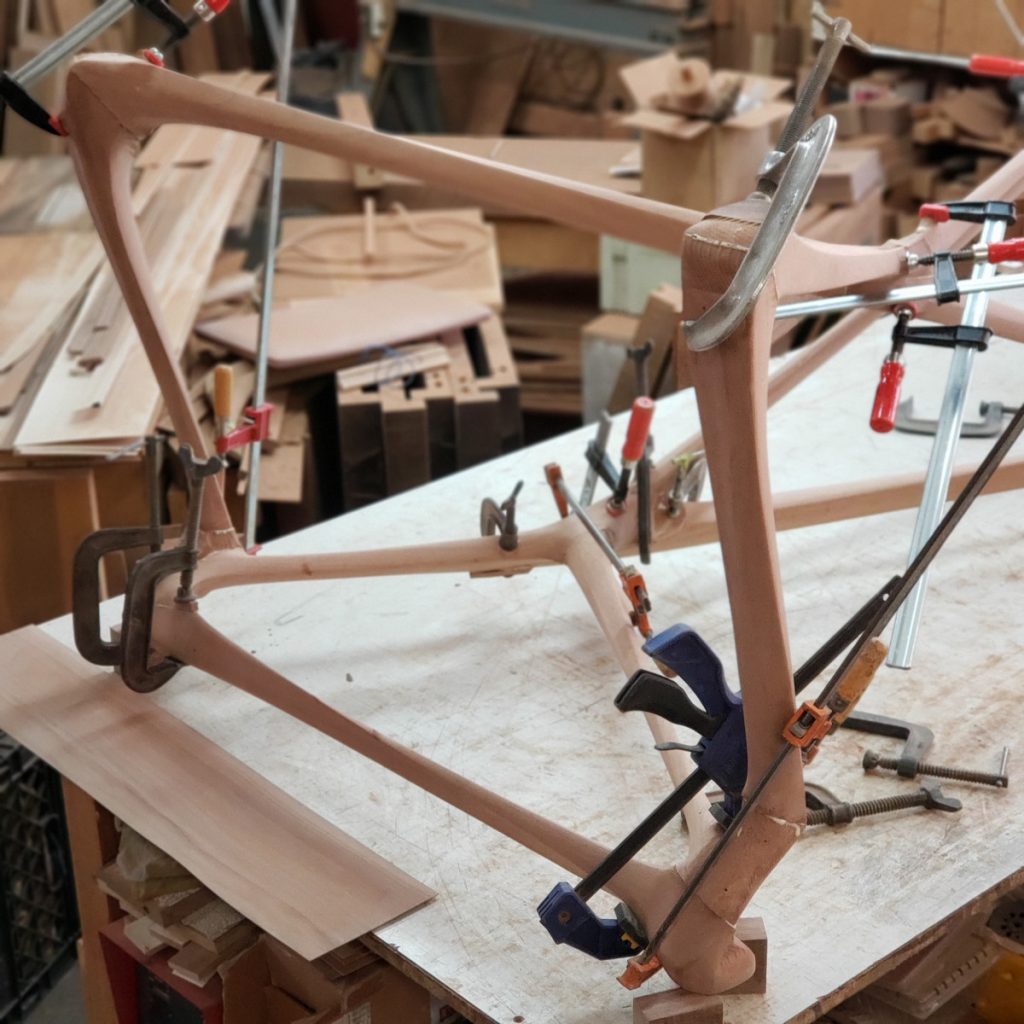
Every clamp matter.
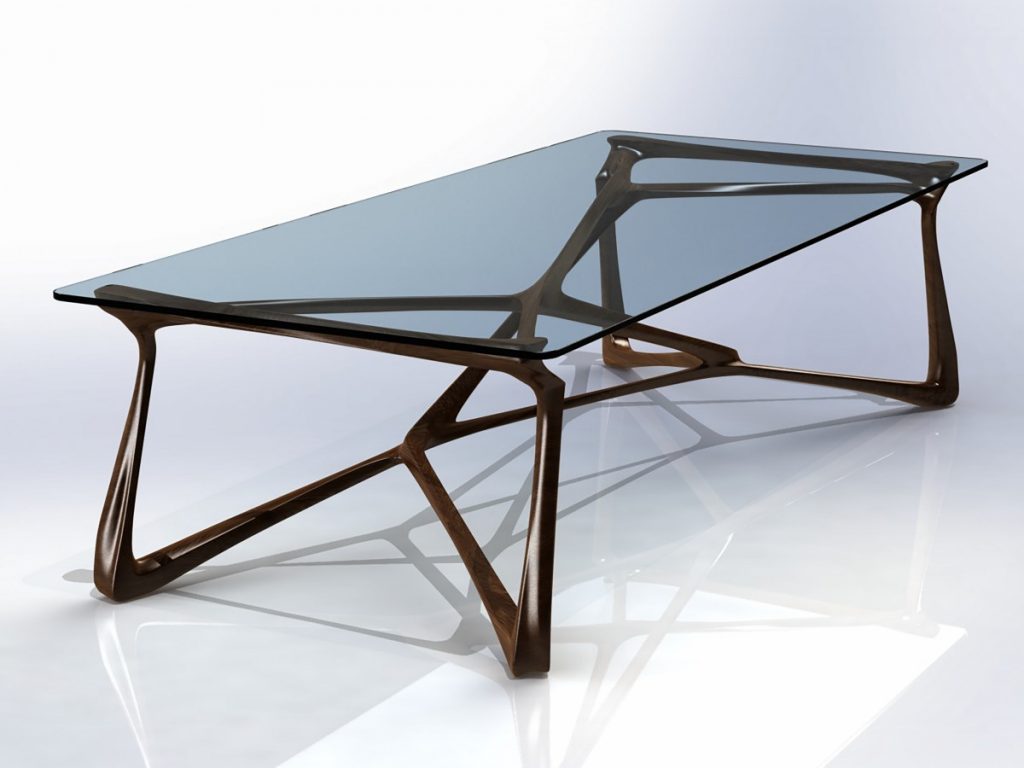
The Howard line of projects yielded this spectacular piece, a 21st Century Modern, Hand Carved Sculptural Dining Table with a glass top. The transparent top allows us to see and appreciate the neuron-like networks of connection that constitute the base structure.

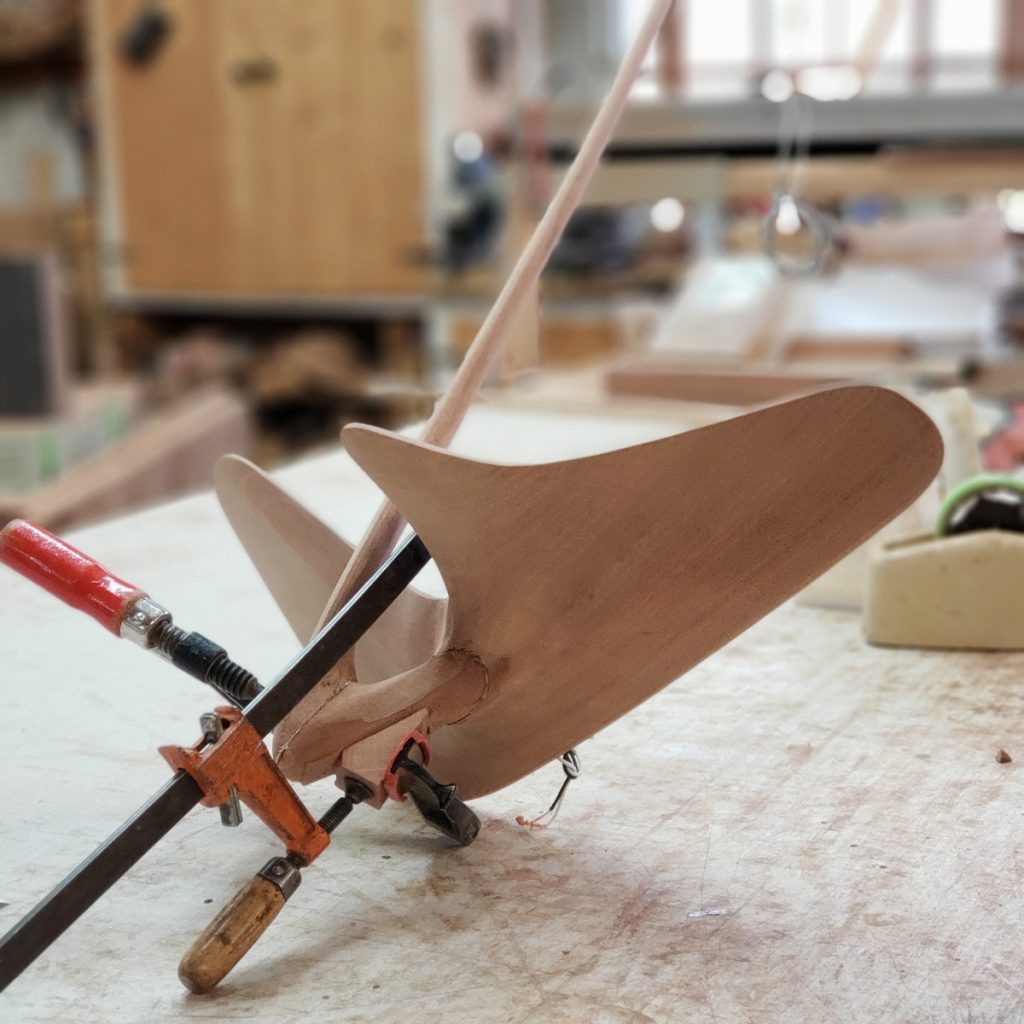
Here are two of the wonderful ceiling lamp or chandeliers that Vlad designed. Both are made from Sapele mahogany. In one of them, the Sapele was bleached white.
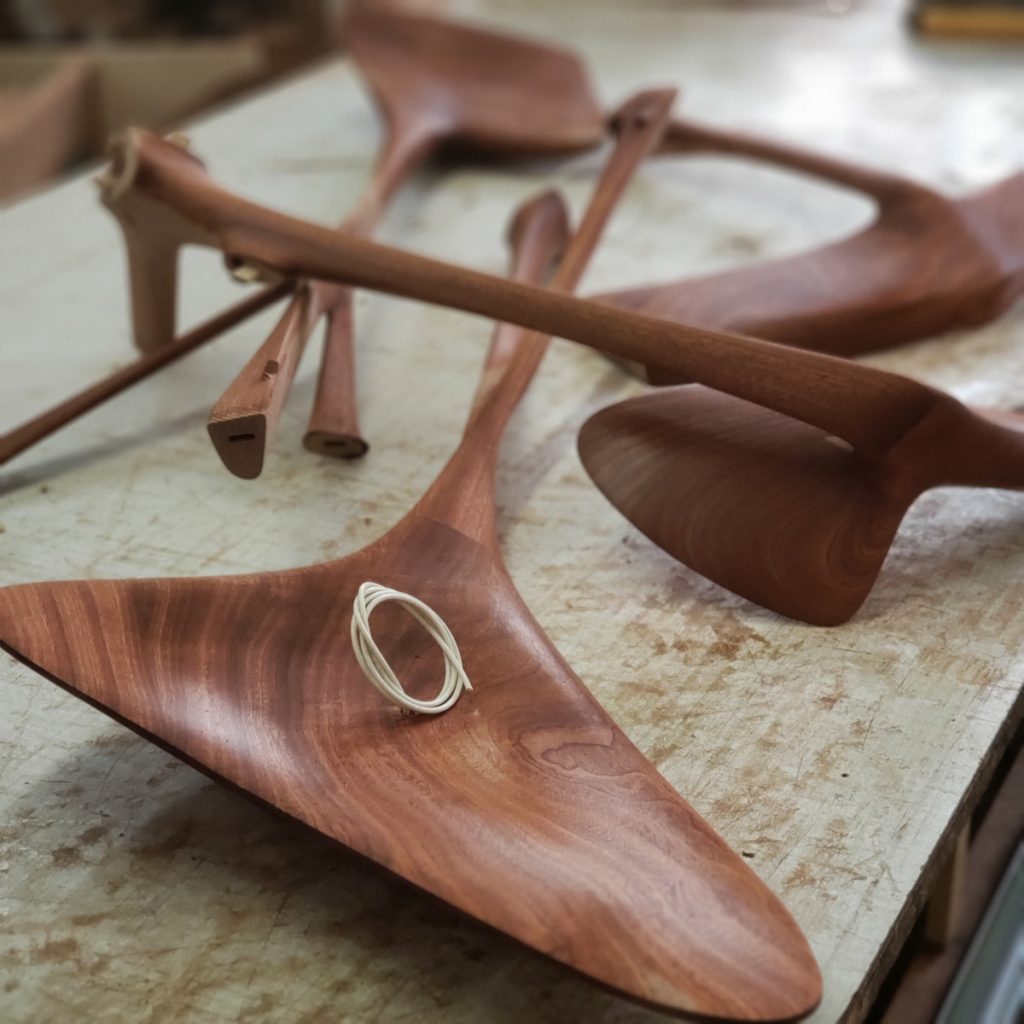
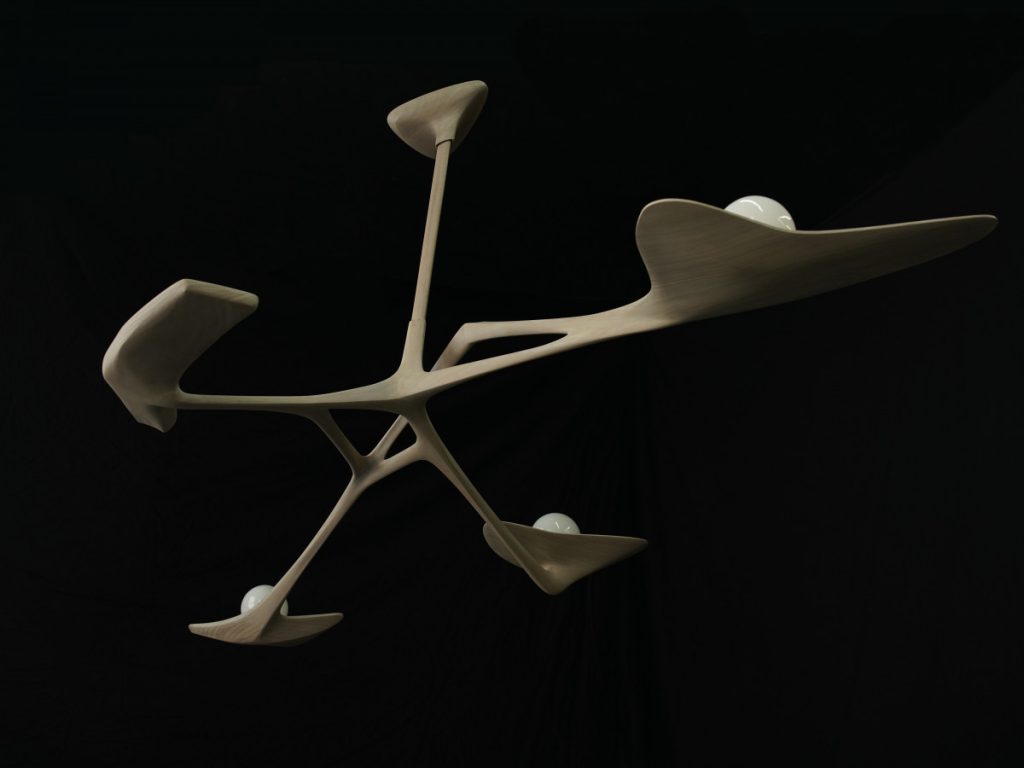
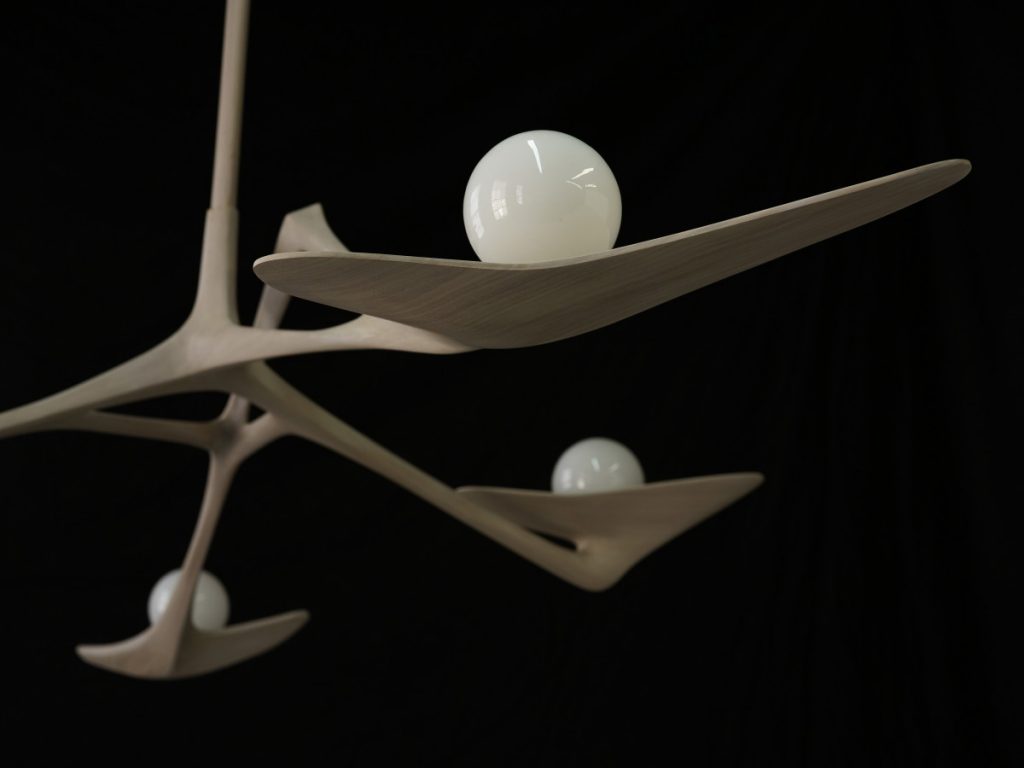



One of the most recent achievements of the Vlad Krasnogorov and Tom Newman was a new virtual reality system that Nikita developed. This sophisticated infrastructure allows the designers to stage the furniture that Vlad and Tom design directly in the clients’ homes. The clients and the designers wear special glasses that project the 3D computer model and integrate it with the real home environment. The user can pick up the furniture from a library and present it to the interior space. This gives all the involved parties a better understanding of the impact of the pieces on the space.
Vladimir and Nikita Krasnogorov utilize 3D virtual reality programs for most of their projects. Their furniture is not only made with the aid of a computer, but they are presented to the interior designer and the clients in a pre-production computer-generated realism that allows all the parties to see the pieces in their future interior and evaluate their impact on the spaces that they are about to occupy. The 3D virtual reality is not presented on a computer screen, instead, both designers and clients wear special glasses that broadcast the digital reality straight to their eyes.
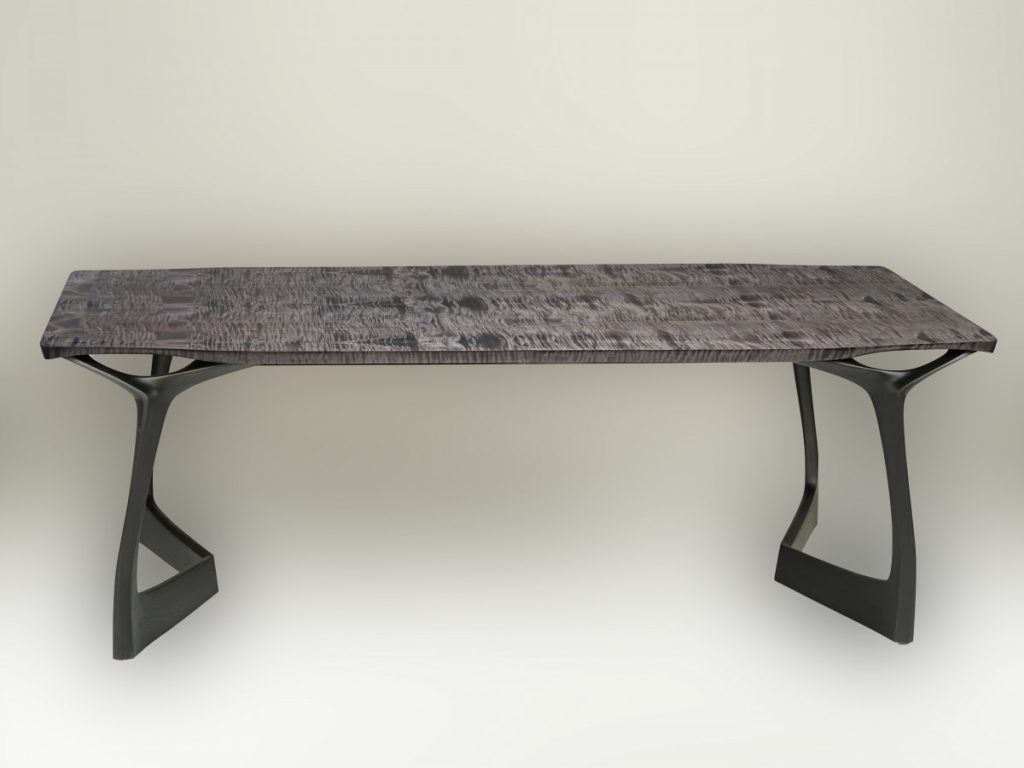
This tiger maple top table was stained dark while the sculptured base was bleached white. The stunning looking complimentary Howard chairs that Vlad designed work great with this piece.


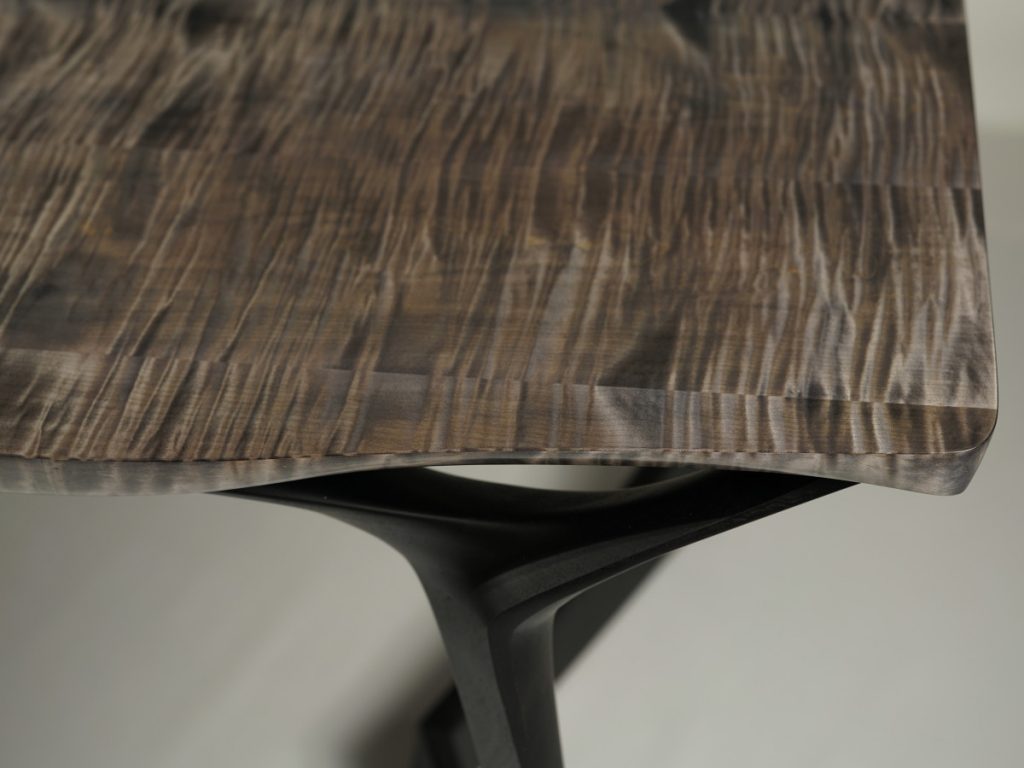
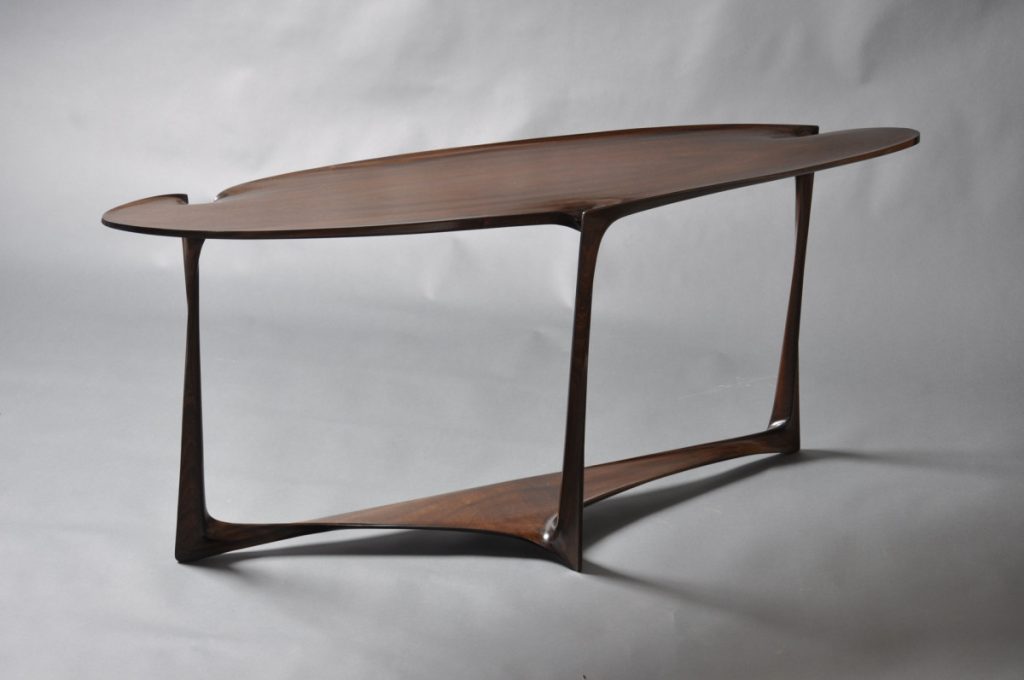
A spectacular oval-shaped side table whose horizontal surfaces and vertical structure connects in sublime harmony. Vlad is a master in stretching the wood envelope to its most uplifting and celebratory limits.

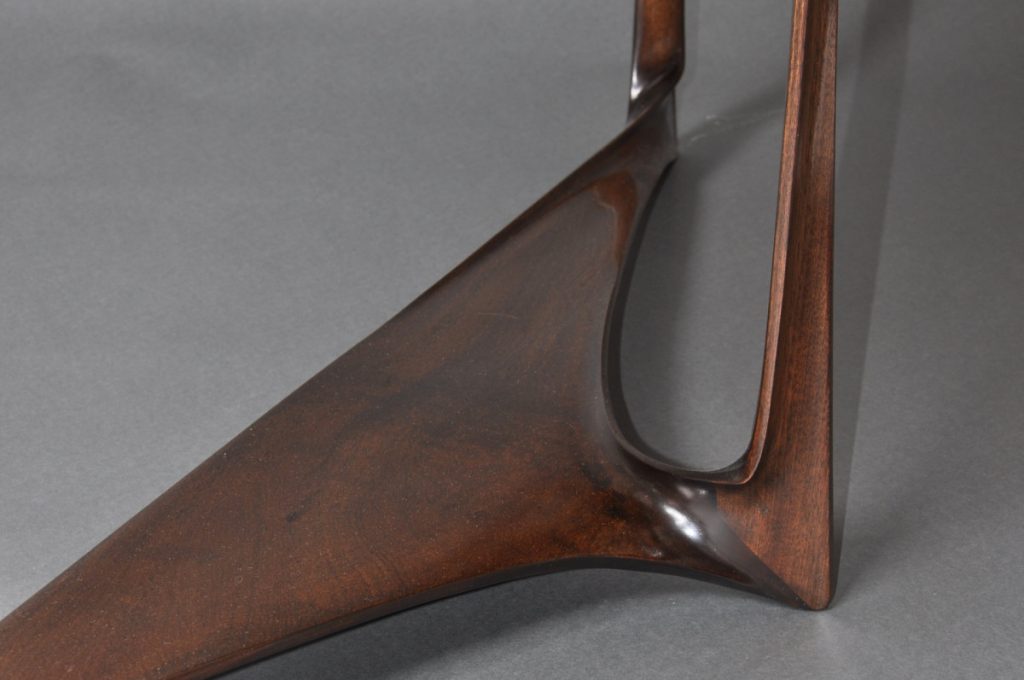
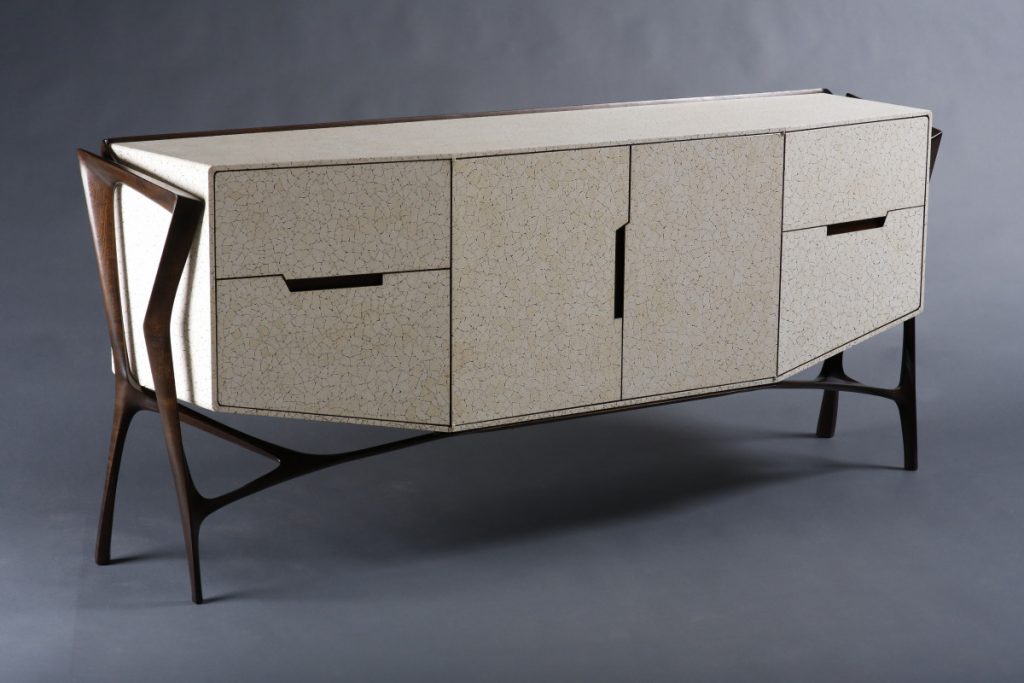
Howard Console. Egg shell inlaid veneer cradled in wood toned Sapele base.

Vladimir Krasnogorov is a true furniture visionary, a master of the craft who has formidable authority in all aspects of creation. I can’t wait to see his future projects and to witness the level of poetic aesthetic that they will convey.
Here are some supplies and tools we find essential in our everyday work around the shop. We may receive a commission from sales referred by our links; however, we have carefully selected these products for their usefulness and quality.







